Weekly Current Affairs (15th to 21st September 2024) | General Test Preparation for CUET UG - CUET Commerce PDF Download
India Launches BHASKAR to Transform Startup Ecosystem
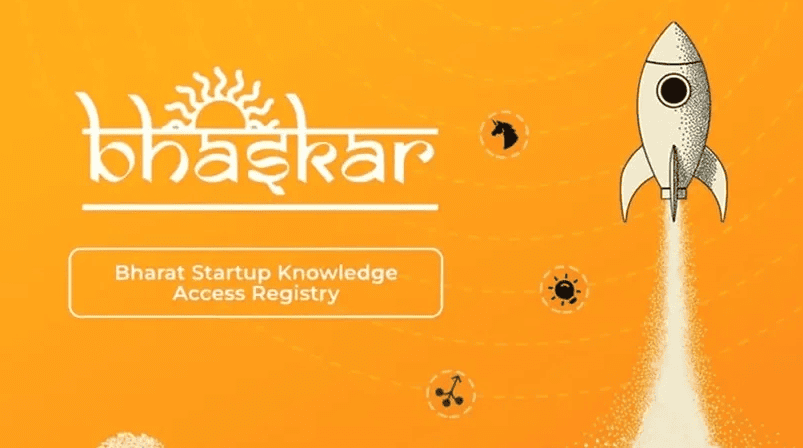
BHASKAR, which stands for Bharat Startup Knowledge Access Registry, is a new digital platform launched by the Indian government to support startups and entrepreneurs.
- The platform aims to centralize and streamline access to crucial information, resources, and tools for various stakeholders in the startup ecosystem, including startups, investors, mentors, and service providers.
- By providing a unique BHASKAR ID to each user, the platform seeks to facilitate personalized experiences, making it easier for users to connect and collaborate effectively.
Key Features of BHASKAR:
- Networking and Collaboration: BHASKAR will foster connections between startups, investors, and mentors, promoting cross-sector collaboration.
- Easy Access to Resources: The platform will provide startups with immediate access to essential tools and information, accelerating their growth.
- Personalised Experience: Each user will receive a tailored experience through their unique BHASKAR ID, ensuring relevant connections and opportunities.
- Better Search Tools: Enhanced search functionalities will allow users to quickly find pertinent resources and potential collaborators.
- Global Recognition: BHASKAR aims to elevate India's status as a leader in innovation and facilitate international partnerships.
How BHASKAR will impact startups:
- BHASKAR is designed to stimulate innovation, job creation, and collaboration by providing a centralized hub for the startup community.
- The platform aims to unlock India's entrepreneurial potential, contributing to a robust and innovative economy.
- By inviting all stakeholders in the startup ecosystem to participate, BHASKAR seeks to enhance connectivity and reshape the startup landscape, positioning India as a significant player in global innovation and growth.
Odisha’s Subhadra scheme

The Subhadra Yojana is a new initiative by the Odisha government, launched to honor Prime Minister Narendra Modi on his 74th birthday. The scheme aims to provide financial assistance to women in the state, offering ₹10,000 per year to eligible individuals to help meet their basic needs.
Registration and Eligibility:
- The scheme targets women aged 21 to 60 years from economically weaker backgrounds.
- Women from wealthy families, those in government jobs, or individuals already receiving significant government assistance are not eligible to apply.
- Over the next five years, the program plans to benefit more than 1 crore (10 million) women.
Implementation Process:
- The financial support will be disbursed in two installments each year:
- ₹5,000 on Rakhi Purnima
- ₹5,000 on International Women’s Day
- The funds will be transferred directly into the women’s Aadhaar-linked bank accounts.
- To ensure security, e-KYC verification is mandatory for all participants.
- Each woman will receive a Subhadra Debit Card for easy access to the funds.
- Additional incentives or rewards will be given to women who engage in a high volume of digital transactions.
- So far, over 50 lakh (5 million) women have registered to benefit from this scheme.
Financial Aspects:
- The Odisha government has allocated a substantial budget of ₹55,825 crore for this scheme over the next five years.
- In the first year (2024-25), ₹10,000 crore will be utilized to kickstart the program and assist as many women as possible.
- The scheme is also viewed as a significant political strategy by the BJP (Bharatiya Janata Party), as it was a key electoral promise aimed at attracting women voters, particularly those involved in self-help groups.
- The Subhadra Yojana is designed to rival the BJD’s Mission Shakti program, which previously enjoyed strong support among women voters in the state.
Six Finalists Shortlisted For 2024 Booker Prize
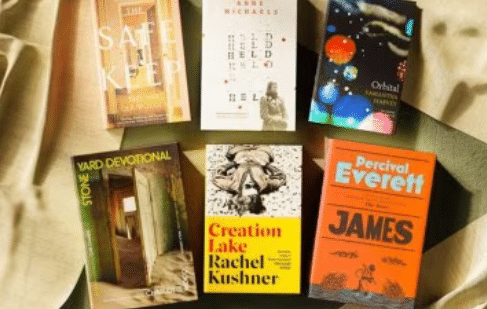
The Booker Prize for fiction has announced its six finalists for 2024, with the shortlist revealed on September 16, 2024. In an exciting turn, five out of the six nominees are women, making this a historic moment in the award’s 55-year history.
Key Nominees:
- Percival Everett: Nominated for his novel James, which offers a new perspective on Mark Twain’s classic Huckleberry Finn.
- Rachel Kushner: Shortlisted for her book Creation Lake, a spy story. Kushner is known for her previous work,The Mars Room.
- Samantha Harvey (Orbital), Anne Michaels (Held), and Charlotte Wood (Stone Yard Devotional) are also among the finalists.
- Yael van der Wouden: The first Dutch author to be nominated for her debut novel,The Safekeep.
Themes in the Stories:
- The shortlisted novels cover a wide range of themes and settings, including World War I, the 19th-century American South, and even the International Space Station.
- This diversity reflects the complexity of modern life and addresses important global issues.
- Edmund de Waal, chair of the judging panel, praised the books for encouraging deep thought and discussion on societal challenges.
Prize Details:
- The Booker Prize, established in 1969, honors exceptional fiction and is open to novels published in the U.K. and Ireland.
- The winner will receive £50,000, with the announcement set for November 12, 2024, at a ceremony in London.
About the Booker Prize
- The Booker Prize, initiated in 1969, is awarded for the best novel written in English. Initially, it was open only to authors from Commonwealth countries, Ireland, and Zimbabwe. In 2014, the prize was expanded to include authors from the U.S.
- The prize aims to promote literary fiction and significantly boosts book sales for the winners. In 2020, a new category called the “Booker Prize for Fiction” was introduced to adapt to the publishing changes brought about by the COVID-19 pandemic. Each winner receives £50,000 and gains international recognition.
Amrit Mohan Prasad Appointed Director General of SSB
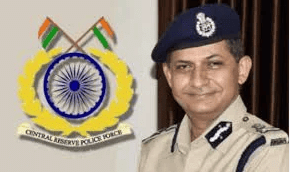
- Amrit Mohan Prasad is an Indian Police Service (IPS) officer from the Odisha cadre.
- He has previously served as the Special Director General of the Central Reserve Police Force (CRPF).
- His appointment as the Director General (DG) of the Sashastra Seema Bal (SSB) was approved by the Appointments Committee of the Cabinet, under the Ministry of Home Affairs.
Role of the Sashastra Seema Bal (SSB):
- The SSB is one of India’s Central Armed Police Forces, established in 1963 to secure the Indo-Nepal border.
- Its headquarters is in New Delhi.
- The SSB is responsible for anti-smuggling operations, preventing cross-border crime, counter-terrorism activities, and disaster relief efforts.
- SSB personnel are trained in mountaineering and jungle warfare, and their motto is “Service, Security, and Brotherhood.”
- In addition to security duties, the SSB also engages in community development and civic programs to strengthen ties with border communities.
Amrit Mohan Prasad’s New Responsibilities:
- As the DG of SSB, Amrit Mohan Prasad will lead efforts to secure India’s borders with Nepal and Bhutan.
- He will oversee operations and strategies related to border security, crime prevention, and maintaining peace along the borders.
- His leadership is crucial for addressing cross-border issues and ensuring the SSB performs its duties effectively.
Tenure and Significance:
- Amrit Mohan Prasad will serve as the DG of SSB until his retirement on August 31, 2025, unless the government issues further orders.
- His extensive experience in law enforcement makes him well-suited for this role.
- His appointment underscores the government’s focus on strengthening border security amid ongoing challenges with cross-border crime and security threats.
NPS Vatsalya Scheme
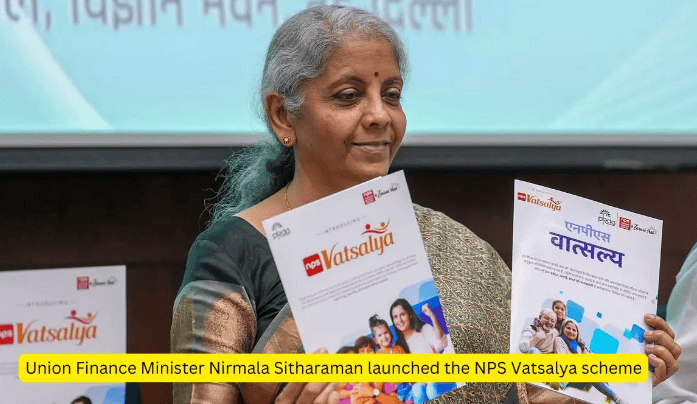
- Any Indian citizen, including Non-Resident Indians (NRIs), can open an NPS Vatsalya account.
- The account is opened by a legal guardian on behalf of a minor (child under 18 years). When the child turns 18, the account can be converted into a regular NPS account.
Key Features of NPS Vatsalya:
- Start Saving Early: Parents can start saving for their child’s future from the time they are infants.
- Minimum Contribution: The minimum amount to invest is ₹1,000 per year, with no upper limit on how much can be contributed.
- Compounding Benefit: The scheme benefits from compounding, meaning the investment can grow over time as interest is earned on both the initial amount and the accumulated interest.
Flexible Contributions:
- Parents can choose to contribute as little as ₹500 per month or ₹6,000 per year. This flexibility allows families to invest at a pace that suits their financial situation, while still providing a chance for significant growth over time.
Investment Options:
- Default Choice: The Moderate Life Cycle Fund (LC-50), which invests 50% in equity (stocks) and 50% in other assets.
- Auto Choice:Based on how much risk parents are willing to take, they can choose:
- Aggressive LC-75(75% in equity)
- Moderate LC-50(50% in equity)
- Conservative LC-25(25% in equity)
- Active Choice: Parents can actively decide how to allocate their money across different types of investments, such as equity, corporate debt, government bonds, and alternative assets.
Partial Withdrawal Rules:
- After three years, parents can make partial withdrawals for specific needs, like education or medical expenses. They can withdraw up to 25% of the total amount saved, and these withdrawals can be done up to three times before the child turns 18.
Maturity and Withdrawal Options:
When the child turns 18, parents can either withdraw the savings or continue with the scheme. The withdrawal options are:
- If the total savings are ₹2.5 lakh or less: The entire amount can be withdrawn as a lump sum.
- If the total savings are more than ₹2.5 lakh: Parents can withdraw 20% of the amount, and the remaining 80% must be used to buy an annuity, which provides regular income in the future.
If the account is not closed when the child turns 18, it automatically becomes a regular NPS Tier I account (All Citizen), and the child must complete a new Know Your Customer (KYC) process within three months.
The NPS Vatsalya scheme offers parents a flexible and effective way to start saving for their child’s long-term future, taking advantage of compounding growth and a range of investment options. It also offers withdrawal flexibility for important needs like education, ensuring the scheme adapts to both immediate and long-term financial goals.
China’s Chang’e-6 Mission Returns Unique Lunar Soil Samples

- Successful Sample Collection: China’s Chang’e-6 mission has achieved a significant milestone by successfully collecting soil samples from the far side of the moon. This is the first time material has been gathered from this less-explored region, marking an important step in lunar exploration.
- Technological Achievement: The Chang’e-6 mission is not only a technological success for China but also contributes valuable data to global lunar research. The samples collected will enhance scientists’ understanding of the moon’s geological history.
- Sample Composition: Initial analysis of the samples indicates a higher presence of plagioclase and a lower presence of olivine compared to samples from the Chang’e-5 mission. This difference suggests that the far side of the moon has a distinct surface composition and geological history.
- Variety of Rock Fragments: The samples included various rock fragments such as basalt,breccia,agglutinate,glasses, and leucocrate. These fragments indicate that the far side of the moon has undergone a range of volcanic and impact events, contributing to its unique geological history.
- Distinct Chemical Composition: Analysis of the Chang’e-6 samples revealed unique trace elements, particularly thorium,uranium, and potassium, which differed from those found in samples from the Apollo and Chang’e-5 missions. This information may provide insights into the moon’s formation and the differences between its various regions.
- Sample Quantity: The Chang’e-6 mission successfully returned nearly 2 kilograms of lunar soil, which will be invaluable for future scientific studies and for advancing our understanding of the moon’s evolution.
- About the Chang’e-6 Mission: Launched in 2024, the Chang’e-6 mission aimed to collect samples from the moon’s South Pole. This mission is part of China’s Chang’e program, named after the Chinese moon goddess. Utilizing advanced robotics and landers, Chang’e-6 plans to bring back approximately 2 kilograms of moon samples to Earth. Following the success of Chang’e-5 in 2020, this mission showcases China’s expanding capabilities in space exploration. Additionally, China has plans for crewed missions to the moon in the 2030s.
Who is Atishi Marlena, New CM of Delhi?
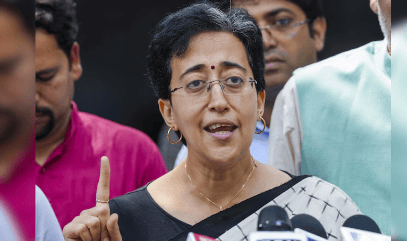
- Arvind Kejriwal has resigned as the Chief Minister of Delhi, paving the way for Atishi Marlena to lead the Aam Aadmi Party (AAP).
- During a recent meeting with AAP lawmakers, Kejriwal proposed Atishi as his successor, and the party members agreed unanimously.
AAP Leadership Transition
- Following Kejriwal's resignation, the party began the process of selecting a new Chief Minister.
- Atishi Marlena was chosen over Kailash Gahlot, another senior party leader.
- Under Atishi's leadership, the AAP has decided not to appoint a deputy chief minister.
Who is Atishi Marlena?
- Atishi Marlena was born on June 8, 1981, into an academic family in Delhi, with both parents as professors at Delhi University.
- Her husband, Praveen Singh, works in the field of education.
- The name “Marlena” reflects her early influences from Marx and Lenin.
Education and Early Life:
- Atishi attended Springdales School for her early education.
- She graduated from St. Stephen’s College in 2001 and later studied at Oxford University with a Chevening scholarship in 2003.
- She continued her studies at Magdalen College, Oxford, with a Rhodes scholarship in 2005, showcasing her academic excellence.
A Shift in Public Persona:
- In 2018, Atishi dropped “Marlena” from her public name, choosing to go simply by “Atishi.”
- This change was aimed at emphasizing her professional achievements over her family background.
- Atishi wanted to establish a stronger public identity as a leader in social work and education, reflecting her desire to be seen as an independent political leader.
India’s First Astronaut to ISS Set for Ax-4 Mission
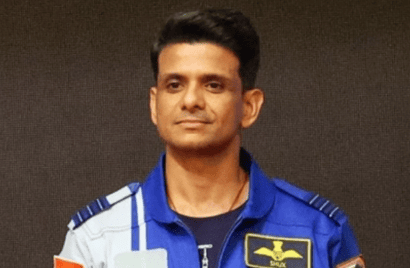
In 2025, India will achieve a significant milestone in space exploration with Group Captain Shubhanshu Shukla leading the Axiom-4 (Ax-4) mission. This mission marks India's first human presence on the International Space Station (ISS) and is only the second government-sponsored human spaceflight from India, following Wing Commander Rakesh Sharma's mission in 1984.
Background of the Mission:
- The Ax-4 mission is part of a larger collaboration between India and the United States, as announced by Indian Prime Minister Narendra Modi during his visit to the U.S.
- To facilitate this mission, the Indian Space Research Organisation (ISRO) signed an agreement with Axiom Space, a U.S. company specializing in human spaceflight.
Astronaut Selection:
- Group Captain Shubhanshu Shukla, a test pilot in the Indian Air Force, has been selected to pilot the Ax-4 mission.
- He will be supported by Group Captain Prashanth Nair, also from the Indian Air Force.
- The mission will be led by Peggy Whitson, an experienced astronaut responsible for operations and training.
Mission Training:
- Astronauts like Shubhanshu Shukla undergo extensive training before their space missions.
- The training includes spacecraft operation, emergency handling, and conducting scientific experiments.
- Shukla's training will focus on spacecraft navigation, docking, and assisting with research during the 14-day stay on the ISS.
Scientific Experiments:
- During his time on the ISS, Shukhanshu Shukla will conduct five experiments in microgravity.
- These experiments will contribute to scientific research and support India's future space missions, particularly the Gaganyaan program, which aims to send India's first crewed mission into space.
Technological Aspects:
- The Ax-4 mission will utilize advanced technology from SpaceX, including the Falcon 9 rocket and the Dragon spacecraft.
- The Dragon spacecraft is known for its automated docking systems and advanced life support systems, ensuring astronaut safety.
- The mission will also involve astronauts from Poland and Hungary, emphasizing international collaboration in space exploration.
About the Axiom-4 Mission:
- The Axiom-4 mission is part of NASA’s private astronaut program, allowing commercial companies like Axiom Space to send astronauts to the ISS.
- This will be the fourth mission in the series, following Axiom-1, Axiom-2, and Axiom-3.
- The Crew Dragon spacecraft will be used for the mission, with the crew possibly including private astronauts or commercial participants.
- The mission aims to conduct scientific research, demonstrate new technologies, and strengthen international partnerships for future space exploration.
Cabinet Approves Chandrayaan-4, Venus Orbiter Mission
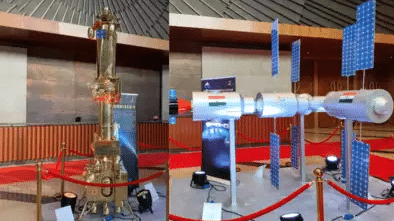
The Union Cabinet in India has approved significant initiatives in the country's space exploration plans, including the Bharatiya Antariksh Station (BAS), the Chandrayaan-4 mission, and preparations for India's first mission to Venus. Prime Minister Narendra Modi emphasized the importance of these milestones, aiming for a self-sustained space station by 2035 and a manned moon mission by 2040.
Bharatiya Antariksh Station (BAS):
- The BAS project aims to establish India's first space station, supporting the Gaganyaan program(India's first human spaceflight mission).
- India plans to launch the initial module, called BAS-1, by 2028, with the entire station operational by 2035.
- The space station will orbit 300 to 400 km above Earth and accommodate astronauts for up to 20 days at a time.
- The station will facilitate scientific research and promote national and international cooperation.
- The BAS modules will be launched using India's GSLV Mk III rocket, showcasing the country's growing capabilities in space exploration.
Technological Validation:
- India will conduct various missions to test the technologies essential for building and operating the space station.
- These missions are crucial for ensuring safety and success in future crewed spaceflights.
Chandrayaan-4 Mission:
- The Chandrayaan-4 mission aims to bring back moon samples to Earth, building on the success of Chandrayaan-3, which demonstrated India's capability to land on the moon.
- Chandrayaan-4 will serve as a cost-effective way to develop moon technologies in preparation for a manned moon mission by 2040.
Venus Mission:
- The government has also approved India's first mission to Venus, expanding the country's role in planetary exploration and contributing to space research beyond the moon.
- Through these projects, India aims to showcase its growing strength in space exploration, focusing on both lunar and interplanetary missions to establish a sustainable human presence in space by 2040.
White Revolution 2.0
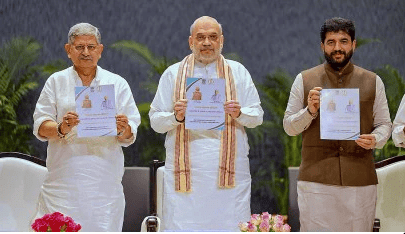
Union Minister Amit Shah has launched “White Revolution 2.0” to strengthen India’s dairy sector, building on the success of Operation Flood from 1970, which transformed the industry through cooperative societies and made India a leading milk producer.
- Goal: Increase milk collection by 50% in five years, raising daily procurement from 660 lakh kg to 1,007 lakh kg by 2028-29.
- Cooperative Expansion: Currently,1.7 lakh dairy cooperative societies cover 30% of villages, handling 10% of national milk production.
- NDDB Plans: Establish 56,000 new cooperatives and improve 46,000 existing ones, focusing on states like Uttar Pradesh,Odisha,Rajasthan, and Andhra Pradesh.
- Funding: From National Programme for Dairy Development (NPDD) 2.0 for setting up milk collection centers, chilling facilities, and training programs.
- Current Production: India produces 230.58 million tonnes of milk, the highest globally, but milk yield per animal remains low compared to global standards.
- Economic Impact: Dairy contributes 40% of agricultural output and supports over 85 million people. Around 63% of milk produced reaches the market, with cooperatives controlling most of the organized sector.
- Focus on Inclusivity: White Revolution 2.0 aims to improve production, enhance economic opportunities, and empower rural communities, particularly women, through cooperative movements.
- Strategic Role: The initiative is crucial for India’s dairy development, making the sector more inclusive and efficient.
Jordan Becomes First Country to Eliminate Leprosy
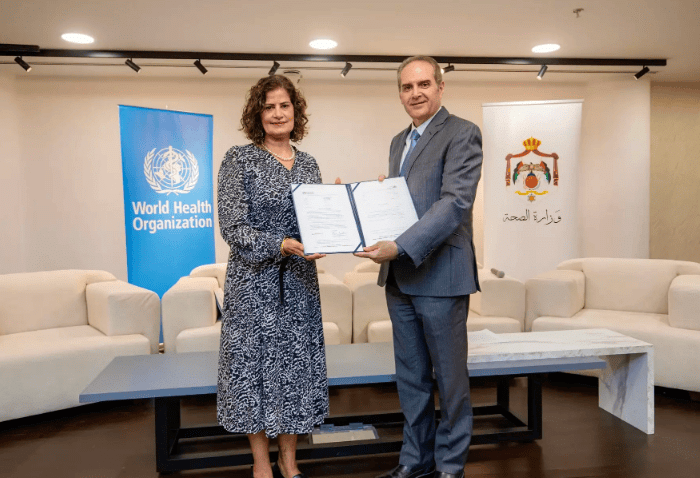
- The World Health Organization (WHO) has recognized Jordan as the first country in the world to eliminate leprosy, a significant public health achievement. WHO Director-General Dr. Tedros Adhanom Ghebreyesus praised Jordan's efforts in controlling the disease and combating its associated stigma.
- Jordan's success in eliminating leprosy demonstrates that with effective strategies, countries can not only eradicate diseases but also mitigate the social and economic impacts related to them. According to Saima Wazed, WHO Regional Director for South-East Asia, this achievement goes beyond disease elimination to address the psychological and social ramifications of leprosy.
- For over 20 years, Jordan has not reported any cases of indigenous leprosy, reflecting the country's political commitment and robust health programs aimed at controlling and eradicating the disease.
- After a thorough evaluation by an independent WHO team, Jordan was confirmed to have successfully eradicated leprosy, highlighting the effectiveness of its public health initiatives.
- Dr. Hanan Balkhy, WHO Regional Director for the Eastern Mediterranean, stated that Jordan's accomplishment serves as a model for other countries, demonstrating how effective planning and implementation can overcome public health challenges. Despite the elimination of leprosy, the WHO and Jordan's Ministry of Health emphasize the need for ongoing vigilance and monitoring for potential new cases, particularly from international sources.
- Leprosy, also known as Hansen’s disease, is a chronic infectious disease caused by the bacterium Mycobacterium leprae. It primarily affects the skin, nerves, and sometimes other body parts. Early diagnosis and treatment are crucial to prevent severe complications like disability. Leprosy is still classified as a neglected tropical disease (NTD), with over 200,000 new cases reported annually in more than 120 countries. Its elimination requires robust public health measures and global collaboration.
- Jordan, located in the Middle East, is renowned for its rich history and cultural heritage. It is home to Petra, an ancient city and UNESCO World Heritage site, and Amman, one of the oldest continuously inhabited cities globally. The country is famous for the Jordan River, known for its religious significance as the site of Jesus' baptism, and Wadi Rum, celebrated for its stunning desert landscapes. The Dead Sea, the lowest point on Earth, is also located in Jordan, along with the country’s delicious national dish, mansaf. Additionally, Jordan is home to the world’s largest olive tree, over 2,000 years old.
|
164 videos|800 docs|1157 tests
|
















